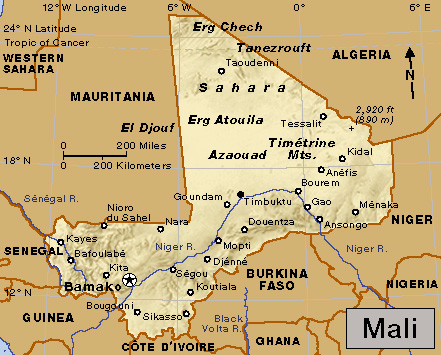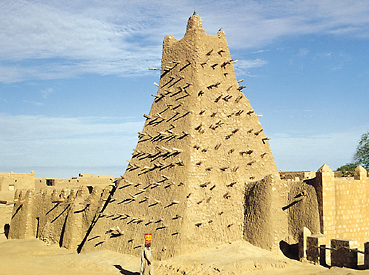Timbuktu << tihm BUHK too >> (pop. 54,629), is a trading town in central Mali. Its official name is Tombouctou << tawn book TOO >> . It lies near the southern edge of the Sahara, about 8 miles (13 kilometers) north of the Niger River. From the 1300’s to the 1600’s, it was one of the richest commercial cities of Africa and a center of Islamic learning.

Timbuktu began as a nomad camp in about 1100. It became prominent in the 1300’s with the rule of Mansa Musa, emperor of the Mali Empire, who attracted merchants and scholars to Timbuktu from northern Africa. Goods from North Africa were exchanged in Timbuktu for products from the forests and grasslands of West Africa. Camel caravans from North Africa carried cowrie shells that were used as money, as well as salt, cloth, copper, books, dates, figs, and metalwork to Timbuktu. Arab traders also brought slaves, captured or bought in Mediterranean countries. The merchants of Timbuktu traded gold, ivory, kola nuts, and slaves—all from the south. Timbuktu became a center of scholarship in history, law, and the Islamic religion.

Timbuktu’s location left it open to attack, and control of the city changed hands many times. From the 1200’s through the late 1800’s, it was controlled by the Mali Empire, Tuareg nomads, the Songhai Empire, Morocco, the Fulani people, and the Bambara Kingdom. The city was under French rule from the mid-1890’s until 1959, the year before Mali became an independent nation. Since the 1600’s, Timbuktu has declined in both importance and population. It remains an important historical city that is visited by tourists and scholars. It also continues to serve as a center for trade with the north.
